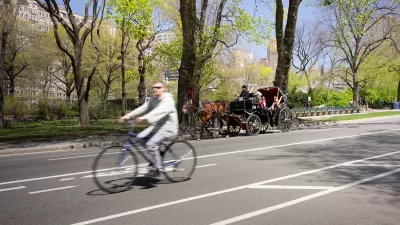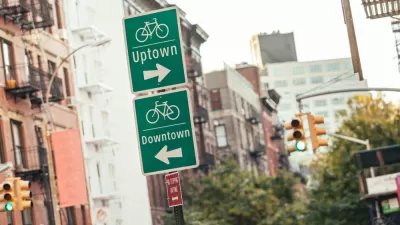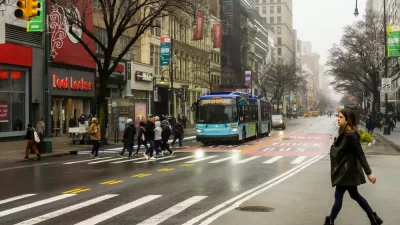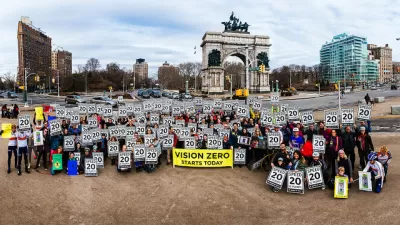The New York City Council is expected to pass a "Streets Master Plan" this week that City Council Speaker Corey Johnson describes as designed to "break the car culture."

"Mayor Bill de Blasio says he now supports a City Council proposal to drastically reshape streets in favor of cyclists, bus riders, and pedestrians—provided, that is, the project's ambitious benchmarks don't kick in until after he leaves office," reports Jake Offenhartz.
City Council Speaker Corey Johnson first proposed the "Streets Master Plan" shortly after taking the leading role in council, and proposed official legislation for the plan in May. The Streets Master Plan, "would require the city to build 250 miles of protected bike lanes and 150 miles of dedicated bus lanes over a five-year period, among a slew of other street-level commitments," according to Offenhartz, and is expected to be approved by the City Council this week.
"The mayor had previously declined to support the legislation, expressing reservations about balancing the needs of communities, while touting his own Vision Zero plan as sufficient," according to Offenhartz.
Emma G. Fitzsimmons first reported the news of the compromise between the mayor and the council that cleared the way for the legislation to pass in the New York Times.
Add this $1.7 billion plan to the recent effort to block cars from 14th Avenue to make room for buses, a forthcoming congestion pricing scheme, and the mayor's own "Green Wave" plan, and New York City is heading toward some very tangible changes in how it manages its traffic flows.
Yet another article published today by the New York Times, written by Corey Kilgannon, explains more about the tragic history motivating the politics of the traffic safety push in New York City.
FULL STORY: De Blasio Supports 'Transformative' Safe Streets Plan, Just Not On His Watch

Study: Maui’s Plan to Convert Vacation Rentals to Long-Term Housing Could Cause Nearly $1 Billion Economic Loss
The plan would reduce visitor accommodation by 25,% resulting in 1,900 jobs lost.

North Texas Transit Leaders Tout Benefits of TOD for Growing Region
At a summit focused on transit-oriented development, policymakers discussed how North Texas’ expanded light rail system can serve as a tool for economic growth.

Using Old Oil and Gas Wells for Green Energy Storage
Penn State researchers have found that repurposing abandoned oil and gas wells for geothermal-assisted compressed-air energy storage can boost efficiency, reduce environmental risks, and support clean energy and job transitions.

Opinion: DC Encampment Sweeps Hide, but Don’t Solve, Homelessness
President Trump recently ordered the clearing of encampments built by unhoused people on federal land in Washington, D.C.

Santa Barbara Could Build Housing on County Land
County supervisors moved forward a proposal to build workforce housing on two county-owned parcels.

San Mateo Formally Opposes Freeway Project
The city council will send a letter to Caltrans urging the agency to reconsider a plan to expand the 101 through the city of San Mateo.
Urban Design for Planners 1: Software Tools
This six-course series explores essential urban design concepts using open source software and equips planners with the tools they need to participate fully in the urban design process.
Planning for Universal Design
Learn the tools for implementing Universal Design in planning regulations.
Ascent Environmental
Borough of Carlisle
Institute for Housing and Urban Development Studies (IHS)
City of Grandview
Harvard GSD Executive Education
Toledo-Lucas County Plan Commissions
Salt Lake City
NYU Wagner Graduate School of Public Service





























